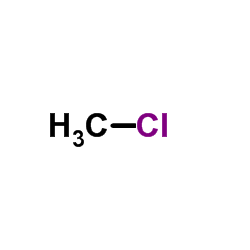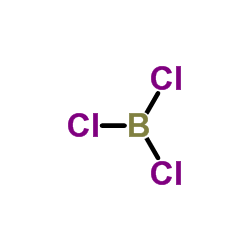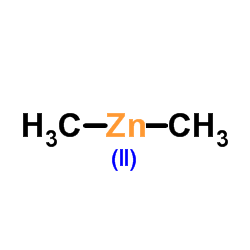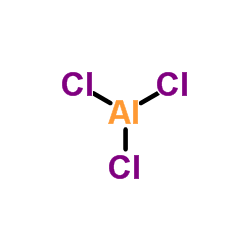二甲基氯化铝, 0.00,Dimethylaluminum chloride
产品编号:西域试剂-WR367848| CAS NO:1184-58-3| MDL NO:MFCD00000458| 分子式:(CH3)2AlCl| 分子量:92.50
本网站销售的所有产品仅用于工业应用或者科学研究等非医疗目的,不可用于人类或动物的临床诊断或者治疗,非药用,非食用,
| 英文名称 | Dimethylaluminum chloride |
|---|---|
| CAS编号 | 1184-58-3 |
| 产品熔点 | -21ºC |
| 产品沸点 | 126-127ºC |
| 产品密度 | 0.701 g/mL at 25 °C |
| 产品闪点 | −1 °F |
| 精确质量 | 91.99730 |
| LogP | 1.85710 |
| 外观性状 | liquid |
| 稳定性 | 常温常压下稳定,对光敏感。吸收空气的的水分。避免与不相容材料,水,潮湿空气接触。 与强氧化剂,水,酸,醇,氧,有机卤化物,水分反应。 |
| 储存条件 | 密封储存,储存于阴凉、干燥的库房。远离火源,易燃易爆区,腐蚀区,水。常用氮气保护。 |
相关文档
化学品安全说明书(MSDS)
下载MSDS质检证书(COA)
相关产品
| 危害码 (欧洲) | F: Flammable;C: Corrosive; |
|---|---|
| 风险声明 (欧洲) | R14/15 |
| 安全声明 (欧洲) | S16;S26;S27;S45;S36/S37/S39 |
| 危险品运输编码 | UN 3394 4.2/PG 1 |
| 包装等级 | I |
| 危险类别 | 4.2 |
| 海关编码 | 2903199000 |
|
Version 1.4
Regulation (EC) No 1907/2006 1 - Product and Company Information Product NameDIMETHYLALUMINUM CHLORIDE, 1.0M SOLUTION IN HEXANES 2 - Hazards Identification SPECIAL INDICATION OF HAZARDS TO HUMANS AND THE ENVIRONMENT Reacts violently with water, liberating extremely flammable gases. Spontaneously flammable in air. Toxic by inhalation, in contact with skin and if swallowed. Causes burns. 3 - Composition/Information on Ingredients Product NameCAS #EC noAnnex I Index Number DIMETHYLALUMINUM CHLORIDE, 1.0M NoneNoneNone SOLUTION IN HEXANES FormulaC2H6AlCl Molecular Weight 92,5100 AMU 4 - First Aid Measures AFTER INHALATION If inhaled, remove to fresh air. If not breathing give artificial respiration. If breathing is difficult, give oxygen. AFTER EYE CONTACT Assure adequate flushing of the eyes by separating the eyelids with fingers. AFTER INGESTION If swallowed, wash out mouth with water provided person is conscious. Call a physician immediately. 5 - Fire Fighting Measures CONDITIONS OF FLAMMABILITY Reacts with water to liberate flammable and/or explosive gas. ALDRICHwww.molbase.com Catches fire if exposed to air. EXTINGUISHING MEDIA Suitable: Dry chemical powder. Unsuitable: Do not use water. Explosion Hazards: Container explosion may occur under fire conditions. SPECIAL PROTECTIVE EQUIPMENT FOR FIREFIGHTERS Wear self-contained breathing apparatus and protective clothing to prevent contact with skin and eyes. SPECIFIC METHOD(S) OF FIRE FIGHTING Use water spray to cool fire-exposed containers. 6 - Accidental Release Measures PERSONAL PRECAUTION PROCEDURES TO BE FOLLOWED IN CASE OF LEAK OR SPILL Evacuate area. Shut off all sources of ignition. PROCEDURE(S) OF PERSONAL PRECAUTION(S) Wear self-contained breathing apparatus, rubber boots, and heavy rubber gloves. METHODS FOR CLEANING UP Cover with dry-lime, sand, or soda ash. Place in covered containers using non-sparking tools and transport outdoors. Ventilate area and wash spill site after material pickup is complete. 7 - Handling and Storage HANDLING Directions for Safe Handling: Do not get in eyes, on skin, on clothing. Do not breathe vapor. STORAGE Conditions of Storage: Keep tightly closed. Keep away from heat, sparks, and open flame. Store in a cool dry place. Incompatible Materials: Do not allow contact with water SPECIAL REQUIREMENTS: Air sensitive. 8 - Exposure Controls / Personal Protection ENGINEERING CONTROLS Safety shower and eye bath. Use only in a chemical fume hood. GENERAL HYGIENE MEASURES Wash thoroughly after handling. PERSONAL PROTECTIVE EQUIPMENT Respiratory Protection: Use respirators and components tested and approved under appropriate government standards such as NIOSH (US) or CEN (EU). Where risk assessment shows air-purifying respirators are appropriate use a dust mask type N95 (US) or type P1 (EN 143) respirator. Hand Protection: Wear heavy rubber gloves. Eye Protection: Chemical safety goggles. Special Protective Measures: Impervious protective clothing. ALDRICHwww.molbase.com Faceshield (8-inch minimum). 9 - Physical and Chemical Properties pH N/A BP/BP RangeN/A MP/MP RangeN/A Flash Point- 18,000 °C.Method: closed cup FlammabilityN/A Autoignition TempN/A Oxidizing Properties N/A Explosive Properties N/A Explosion LimitsN/A Vapor PressureN/A SG/Density0,7010 g/cm3 Partition Coefficient N/A ViscosityN/A Vapor DensityN/A Saturated Vapor Conc. N/A Evaporation RateN/A Bulk DensityN/A Decomposition Temp.N/A Solvent ContentN/A Water ContentN/A Surface TensionN/A ConductivityN/A Miscellaneous DataN/A SolubilityN/A 10 - Stability and Reactivity STABILITY Conditions to Avoid: Moisture. Materials to Avoid: Oxygen, Oxidizing agents, Alcohols, Acids Reacts violently with water. HAZARDOUS DECOMPOSITION PRODUCTS Hazardous Decomposition Products: Hydrogen chloride gas, Aluminum oxide Carbon monoxide, Carbon dioxide. 11 - Toxicological Information SIGNS AND SYMPTOMS OF EXPOSURE Symptoms of exposure may include burning sensation, coughing, wheezing, laryngitis, shortness of breath, headache, nausea, and vomiting. Inhalation may result in spasm, inflammation and edema of the larynxand bronchi, chemical pneumonitis, and pulmonary edema. Material is extremely destructive to tissue of the mucous membranes and upper respiratory tract, eyes, and skin. Neurotoxic effects. Warning: contains n-hexane (CAS#110-54-3) a suspected neurotoxin. ROUTE OF EXPOSURE Multiple Routes: Harmful if swallowed, inhaled, or absorbed through skin. Causes burns. 12 - Ecological Information No data available. ALDRICHwww.molbase.com 13 - Disposal Considerations SUBSTANCE DISPOSAL Place the material which has been previously covered or mixed with dry sand, lime, or soda ash in a large metal pan outdoors. Slowly add portions of dry butanol until reaction ceases. Cautiously add water from a distance until material has been flooded completely. Observe all federal, state, and local environmental regulations. 14 - Transport Information RID/ADR UN#: 3394 Class: 4.2 PG: I Subrisk: 4.3 Proper Shipping Name: Organometallic substance, liquid, pyrophoric, water-reactive IMDG UN#: 3394 Class: 4.2 PG: I Subrisk: 4.3 Proper Shipping Name: Organometallic substance, liquid, pyrophoric, water-reactive Marine Pollutant: No Severe Marine Pollutant: No Technical Name: Required IATA UN#: 3394 Class: 4.2 PG: I Subrisk: 4.3 Proper Shipping Name: Organometallic substance, liquid, pyrophoric, water-reactive Inhalation Packing Group I: No Technical Name: Required 15 - Regulatory Information CLASSIFICATION AND LABELING ACCORDING TO EU DIRECTIVES INDICATION OF DANGER: F-C Highly Flammable. Corrosive. R-PHRASES: 14/15-17-23/24/25-34 Reacts violently with water, liberating extremely flammable gases. Spontaneously flammable in air. Toxic by inhalation, in contact with skin and if swallowed. Causes burns. S-PHRASES: 16-26-36/37/39-45 Keep away from sources of ignition - no smoking. In case of contact with eyes, rinse immediately with plenty of water and seek medical advice. Wear suitable protective clothing, gloves, and eye/face protection. In case of accident or if you feel unwell, seek medical advice immediately (show the label where possible). Caution: Substance not yet fully tested (EU). 16 - Other Information ALDRICHwww.molbase.com WARRANTY The above information is believed to be correct but does not purport to be all inclusive and shall be used only as a guide. The information in this document is based on the present state of our knowledge and is applicable to the product with regard to appropriate safety precautions. It does not represent any guarantee of the properties of the product. Inc., shall not be held liable for any damage resulting from handling or from contact with the above product. See reverse side of invoice or packing slip for additional terms and conditions of sale. Copyright 2010 Co. License granted to make unlimitedpaper copies for internal use only. DISCLAIMER For R&D use only. Not for drug, household or other uses. ALDRICHwww.molbase.com SECTION 16 - ADDITIONAL INFORMATION N/A |
|
~% 
1184-58-3 |
| 文献:Journal of the American Chemical Society, , vol. 60, p. 2276 Refrig.Eng., , vol. 34, p. 89 Journal of Organic Chemistry, , vol. 5, p. 114 |
|
~% 
1184-58-3 |
| 文献:Journal of the American Chemical Society, , vol. 60, p. 2276 Journal of Organic Chemistry, , vol. 5, p. 114 |
|
~% 
1184-58-3 |
| 文献:Adv.Chem.Ser., , vol. 23, p. 172,176 |
|
~% 
1184-58-3 |
| 文献:Journal of Organometallic Chemistry, , vol. 225, # 1 p. 71 - 85 |
|
~% 
1184-58-3 |
| 文献:Inorganica Chimica Acta, , vol. 59, p. 79 - 82 |
|
~0% 
1184-58-3
详细
|
| 文献:Ashby, E. C.; Smith, R. Scott Journal of Organometallic Chemistry, 1982 , vol. 225, # 1 p. 71 - 85 |
|
~% 
1184-58-3 |
| 文献:Journal of the American Chemical Society, , vol. 60, p. 2276 Journal of Organic Chemistry, , vol. 5, p. 114 Refrig.Eng., vol. 34, p. 89 Chem. Zentralbl., , vol. 108, # II p. 3209 |
|
~% 
1184-58-3 |
| 文献:Journal of the American Chemical Society, , vol. 60, p. 2276 Journal of Organic Chemistry, , vol. 5, p. 114 Refrig.Eng., vol. 34, p. 89 Chem. Zentralbl., , vol. 108, # II p. 3209 |
|
~% 
1184-58-3 |
| 文献:Journal of the Chemical Society, Perkin Transactions 1: Organic and Bio-Organic Chemistry, , p. 291 - 314 |


















 浙公网安备 33010802013016号
浙公网安备 33010802013016号